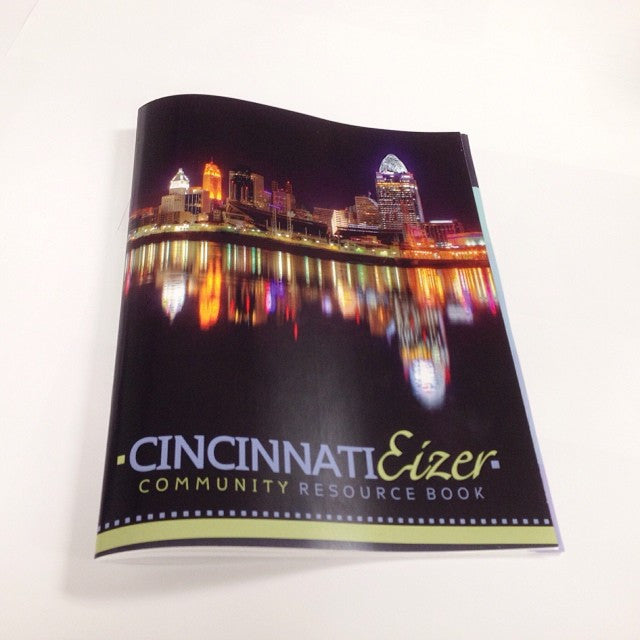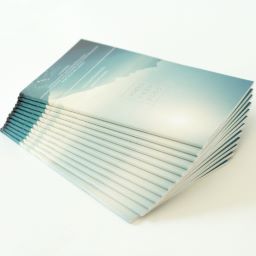The Vital Guide to Comprehending Booklet Printing Options and Techniques
The procedure of pamphlet printing entails multiple considerations that can greatly influence the last product. From picking the suitable format and dimension to recognizing the nuances of binding methods, each option plays a vital role. In addition, aspects such as paper supply and printing methods more affect the effectiveness of the pamphlet. As one browses these options, it comes to be vital to understand just how they adjoin and what that implies for the total result.
Understanding Pamphlet Styles and Dimensions
When considering pamphlet printing, comprehending the different formats and sizes offered is vital for achieving the preferred discussion. Brochures can be produced in many formats, including saddle-stitched, spiral-bound, and perfect-bound, each offering distinctive advantages. Usual sizes vary from basic letter (8.5 x 11 inches) to smaller sized options like A5 (5.8 x 8.3 inches), enabling versatility based upon material and target audience.Selecting the proper dimension can influence both the format and visitor interaction. Larger sizes might suit aesthetically driven web content, while smaller styles might be more portable and easy to use. Additionally, the number of pages influences the selection of binding method, as thicker booklets might require sturdier bindings. Eventually, comprehending these facets enables a more customized technique, guaranteeing that the last item lines up with the designated message and visual, enhancing the general effectiveness of the communication.
Selecting the Right Paper Supply

Binding Methods: Choices and Factors To Consider
When it concerns binding techniques for pamphlets, numerous options are offered, each with distinctive benefits. Saddle stitch binding offers an economical remedy for thinner booklets, while ideal binding methods supply an even more sleek search for thicker publications. Wire-O binding stands apart for its longevity and ease of use, making it optimal for papers that need versatility.
Saddle Stitch Binding
Saddle stitch binding supplies a practical and affordable remedy for assembling booklets, making it a popular option amongst publishers and organizations. This binding method includes folding sheets of paper in fifty percent and stapling them along the fold line, producing a cool and orderly appearance. Usually appropriate for pamphlets with a reduced page count, saddle sewing is excellent for magazines, brochures, and educational products. The simplicity of this technique permits quick production and is often preferred for marketing items or brief runs. Nonetheless, it is important to keep in mind that saddle stitch binding might not appropriate for thicker booklets, as the back might not hold up under boosted weight. In general, it continues to be a trusted choice for many printing tasks.
Perfect Binding Techniques
Perfect binding is a widely utilized technique that supplies a polished and specialist surface to publications and pamphlets. This method includes gluing the web pages together at the spinal column using a strong adhesive, permitting for a clean side and the ability to hold a bigger number of pages contrasted to saddle stitching. Perfect binding is specifically appropriate for thicker pamphlets, such as brochures and yearly records, where a durable, level back is desired. Furthermore, it offers the choice for a printed cover that can be created to improve visual appeal. Factors to consider such as page matter, paper weight, and the intended use of the brochure need to be taken right into account, as they can influence durability and overall top quality.
Wire-O Binding Options
Wire-O binding, known for its sturdiness and versatility, offers a superb alternative for booklets that require easy web page turning and a specialist look. This binding approach uses a collection of steel loops that hold pages firmly, enabling them to exist flat when open. It is especially ideal for handbooks, presentations, and brochures as a result of its durable nature. Wire-O binding is offered in numerous shades and sizes, accommodating different web page matters and thicknesses. Additionally, it allows the incorporation of tabs and covers, improving the booklet's general aesthetic. Considerations for Wire-O binding consist of the option of wire shade, the dimension of the loops, and the degree of modification desired, all of which can greatly affect the final item's look and functionality.
Digital vs. Offset Printing: Which Is Best for You?
When selecting a printing approach for brochures, comprehending the differences in between digital and counter printing is necessary. Digital printing makes use of modern-day technology to produce high-grade prints swiftly and affordably, making it perfect for short runs or projects needing quick turnaround times. It permits modification, giving the capability to publish on-demand with minimal waste.In comparison, counter printing is a conventional method that masters producing big quantities with consistent quality. It includes moving ink from a plate to a rubber blanket, after that to the paper, which results in vivid colors and specific details. Nevertheless, counter printing generally calls for longer setup times view and is a lot more affordable for bigger volumes.Ultimately, the selection in between digital and balance out printing relies on project demands, spending plan, and desired quantity. For tiny, time-sensitive tasks, digital could be the very best look at here choice, while offset may be more suitable for larger, top notch manufacturings.

Creating Your Pamphlet: Tips and Ideal Practices
When developing a booklet, cautious focus to format, typeface selection, and color usage can substantially improve its efficiency. A well-structured layout overviews the visitor's eye, while ideal typefaces guarantee readability and communicate the preferred tone. Additionally, effective usage of color can evoke feelings and emphasize key details, making the general design much more impactful.
Choosing the Right Format
Exactly how can one efficiently pick the ideal layout for a brochure? It is necessary to assess the pamphlet's function and target audience. A tidy, organized format improves readability and engagement. Making use of a grid system can help in straightening elements continually, creating a specialist appearance. In addition, integrating aesthetic hierarchy with differing dimensions and positionings of pictures and text can assist the viewers's eye and highlight vital information. It is additionally vital to leave adequate white space, which stops congestion and permits much better emphasis. Checking various formats through mock-ups can offer insight right into how the style does in real-world circumstances, making certain that the final product meets both functional and aesthetic requirements.
Choosing Appropriate Fonts
A well-chosen font style can significantly improve the general design of a brochure, matching the design and strengthening the material's message. The choice of font styles need to take into consideration readability, especially for body message, as it assures the details comes to all readers. Sans-serif font styles are usually favored for electronic styles, while serif font styles can provide a standard feel in printed products. It's suggested to restrict font options to two or three to maintain aesthetic comprehensibility. Furthermore, font dimension plays a crucial function; headings ought to be distinct yet not frustrating, while body text should fit for analysis. When selecting typefaces, placement with the brochure's motif and target audience is vital for efficient interaction and visual appeal.
Reliable Usage of Color
Shade serves as an effective device in booklet design, forming assumptions and leading visitor feelings. It can stimulate sensations of trust fund, exhilaration, or calmness, depending upon the shades picked. Designers ought to take into consideration color theory concepts, guaranteeing that the selected scheme aligns with the brochure's message and target market. Using cozy colors like red and orange can produce urgency, while cooler tones like blue and eco-friendly foster tranquility.Additionally, comparison plays a navigate to this site vital duty; complementary shades can improve readability and visual appeal. Uniformity in color use throughout web pages even more enhances brand name identity and cohesion. Eventually, efficient color application not only catches attention yet likewise enhances the brochure's objective, making it a necessary facet of successful design.
Completing Touches: Coatings and Unique Impacts
While lots of consider the web content and format of a pamphlet one of the most important components, the finishing touches, such as coverings and special results, play a crucial role in improving its total charm. Coatings can offer security and sturdiness, making sure that the pamphlet endures deterioration. Matte coatings supply an advanced, non-reflective surface, while shiny finishings can make shades show up even more distinctive and lively. Unique impacts, like embossing or foil marking, add a responsive measurement that can produce a memorable impact. These techniques can highlight details areas, attracting interest to crucial information or developing visual passion. Furthermore, UV finish can give a high-shine coating that raises the total look.Together, these completing touches not just enhance the pamphlet's aesthetic yet additionally interact expertise and interest to detail, eventually leaving a long-term effect on the viewers.
Expense Considerations for Brochure Printing
Recognizing the various expense factors to consider for booklet printing is necessary for companies and organizations intending to optimize their budget plans. Trick factors influencing expenses include the option of binding, paper, and ink techniques. Better materials, such as superior paper or specialized inks, typically enhance the general expense. Furthermore, the dimension and web page count of the booklet play a considerable function; bigger brochures call for even more sources and time to produce.Another important consideration is the printing technique, whether digital or offset, as each has its own prices framework and viability for various amounts. Organizations need to additionally consider style expenses, which can differ based upon intricacy and the usage of professional solutions. Eventually, delivery and handling charges can contribute to the total, particularly for huge orders. By evaluating these elements, organizations can make enlightened decisions that line up with their economic capacities while achieving the wanted high quality in their printed materials.
Regularly Asked Concerns
What Are the Environmental Influences of Pamphlet Printing?
The environmental effects of pamphlet printing include deforestation from paper manufacturing, carbon exhausts from transportation, and waste generation from disposed of materials - Booklet Printing. Sustainable techniques, such as making use of recycled paper and environment-friendly inks, can alleviate these effects
Exactly How Can I Make Certain Shade Accuracy in My Pamphlet?
To ensure color precision in a brochure, one need to make use of calibrated monitors, utilize professional shade profiles, carry out test prints, and select top quality printing solutions that use color matching and proofing choices for finest results.
What Is the Typical Turn-around Time for Brochure Printing?
The normal turnaround time for pamphlet printing varies depending on the intricacy and quantity - Booklet Printing. Normally, it varies from a couple of days to 2 weeks, influenced by variables such as printing approaches and finishing needs
Are There Minimum Order Quantities for Brochure Printing?

Can I Publish Booklets in Multiple Languages?
Printing brochures in several languages is possible. Several printing solutions supply options for bilingual or multilingual layouts, permitting effective interaction. Cautious preparation warranties that make elements fit different languages without jeopardizing readability or visual appeals. Furthermore, variables such as paper stock and printing methods more affect the effectiveness of the booklet. When thinking about pamphlet printing, understanding the various layouts and dimensions readily available is essential for achieving the wanted discussion. When choosing a printing approach for brochures, comprehending the differences between electronic and balance out printing is necessary. Furthermore, the dimension and page count of the booklet play a substantial duty; larger booklets require more sources and time to produce.Another crucial consideration is the printing technique, whether electronic or balanced out, as each has its own rates structure and suitability for different amounts. The environmental impacts of pamphlet printing include deforestation from paper manufacturing, carbon discharges from transportation, and waste generation from thrown out products.
Comments on “Maximizing ROI with Multi-Purpose Booklet Printing Designs”